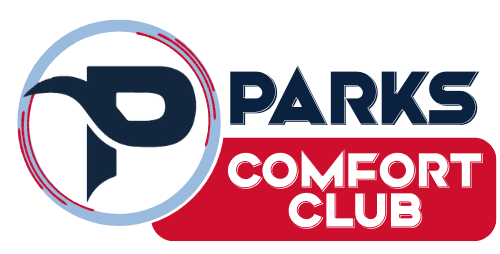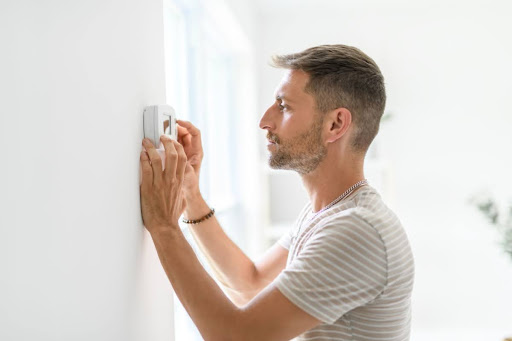Switching from AC to Heat: What You Need to Know

If you live in Charlotte, you’re probably used to flipping between heat and air conditioning more than once during the same week, especially during shoulder seasons. That first flip of the switch can feel like a rite of passage for the fall. But if you’re not doing it the right way, you could be putting your HVAC system at risk for costly repair or even a voided warranty.
Switching from AC to heat isn’t just about hitting a button on the thermostat. It’s about prepping your entire heating system to handle months of operation after sitting idle. Now is the time to make sure everything is in good shape so your home stays warm and efficient all season long.
When Should Charlotte Homeowners Flip to Heat?
Charlotte weather is known for its unpredictability. One week it’s shorts and sandals, and the next it’s coats and scarves. The general rule of thumb for switching to heat is when daytime room temperature consistently drops below 68°F and nighttime temps dip into the 50s. That’s the spot when your air conditioning stops being helpful and your heating system needs to step in.
It’s important not to wait until you feel the chill in your bones before flipping the thermostat. By the time you’re cold, so is your system — and it takes longer to warm up both your home and your equipment. Early fall is the preferred time to start the transition. Plus, heating maintenance appointments fill up fast. Schedule early to avoid the scramble by calling 704-596-8200.
Quick Safety Check Before First Heat
Before you crank on the furnace or adjust that programmable thermostat, take a few minutes to go through this critical checklist. Doing so can help prevent electrical hazards, strange odors, or poor system performance. Here’s what you should check:
1. Test Your Thermostat
Switch it to “heat” and listen. Does your system respond within a few minutes? If not, there could be an issue with the thermostat wiring or batteries. Upgrading to a smart thermostat or modern programmable thermostat can make a big difference in efficiency.
2. Inspect for Strange Smells
The smell of burning dust when you first turn on your heating system is common. But if you smell gas, rotten eggs, or anything metallic, turn everything off immediately and call a technician. This could indicate a natural gas leak, overheating equipment, or something much worse.
3. Listen for Odd Noises
Loud banging, screeching, or humming? That’s not festive fall ambiance. It could be a loose blower motor, cracked heat exchanger, or aging compressor in the furnace or heat pump. Time to schedule HVAC maintenance!
4. Check for Visible Debris or Blockages
Check the air filter and vents. Debris, leaves, or even critters can block airflow and create major issues. Make sure nothing is obstructing your system’s condenser or evaporator components.
Thermostat Settings That Prevent Short Cycling
One of the most common early-season issues with heating and cooling systems is short cycling, or when your system starts and stops frequently without completing a full cycle. It wastes energy, increases wear and tear, and puts strain on your compressor and heat exchanger. The culprit? Usually poor thermostat settings.
Start by setting your thermostat to a consistent room temperature, usually between 68°F and 72°F. Avoid wide swings or constant manual adjustments. If you have a smart thermostat, let it do the work. It’ll adjust automatically and learn your schedule to avoid short bursts of operation that hurt efficiency.
If you’re using a programmable thermostat, use the “hold” feature instead of constantly changing settings. This locks in your preferred temperature and keeps the system from bouncing between heating and air modes.
Bonus Tip: If you notice your system still short cycles, it might be an early warning sign of a leak, blocked duct, or miscalibrated sensor, something your HVAC technician can diagnose during a fall maintenance visit.
Filter, Vents, and Airflow Prep
You’ve heard it before, but it bears repeating: replace your air filter! A clogged filter restricts airflow, leads to dusty rooms, and makes your system work overtime. Change it at least every 1–3 months, and more often if you have pets, allergies, or ongoing indoor air quality issues.
Next up is vent inspection. Walk through your home and open every register. Check for furniture, rugs, or kitchen appliances blocking airflow. Use a flashlight to look inside, and if you see excessive dust or debris, it may be time for a cleaning. Also, don’t forget to check the attic and basement vents, especially if you’ve recently done any home improvement projects or plumbing repairs that may have altered airflow paths.
Heat Pump Owners: Do These Extra Steps
If you rely on a heat pump for both heating and cooling, there are a few special things you’ll want to do before asking it to warm your home. Unlike a traditional furnace, a heat pump literally reverses the flow of refrigerant to swap from cooling to heating. That means both sides of the system must be in good shape before the flip.
- Clear the Outdoor Unit: Remove any debris, sticks, or grass clippings around your condenser. A blocked unit can choke your system, causing poor airflow and unnecessary strain.
- Look for Ice or Standing Water: A frozen or water-logged unit can damage the compressor, coils, or other components. If you see ice or puddling, cut power at the circuit breaker and call a technician for repair.
- Test the Reversing Valve: This valve is what allows your heat pump to switch between modes. If your system won’t shift from air conditioning to heat, this part may be stuck. It’s a job for an HVAC technician, not a DIY fix.
- Flush the Condensate Drain Line: The drain line removes moisture from the system. A clogged line can lead to leaks, mold, or water damage. A simple flush now prevents big problems later.
- Schedule Professional Maintenance: Let an expert check your refrigerant, clean the evaporator coils, inspect electrical connections, and verify pressure levels. Preventative HVAC maintenance now will save your system from unnecessary wear and tear.
Ductwork and Energy Loss Spots To Tackle Now
Your duct system works hard year-round, but seasonal transitions put it to the test. In the fall, it’s important to check your ducts for cracks, gaps, or poorly sealed connections, especially in the attic, crawlspace, or garage where heat can easily escape.
Leaky ductwork can lose up to 30% of heated air before it ever reaches your vents. That’s a ton of wasted energy and money. Look for areas that feel especially cold or dusty. If you notice rooms that heat unevenly, it might be time for duct sealing, insulation upgrades, or a full duct replacement in severe cases.
Humidity, Comfort, and Indoor Air Quality for Fall
As temps drop, so does the humidity. While that might sound like a dream after a sticky Charlotte summer, too little humidity can cause problems. Think static shocks, dry skin, nosebleeds, and cracked wood floors. Running your heating system without addressing humidity can also create uncomfortable dryness.
A whole-home humidifier installed by a professional can restore balance and keep your indoor air quality healthy. Proper humidity also helps your body feel warmer, so you can keep the thermostat a couple degrees lower and still stay cozy, saving you money on heating bills.
Charlotte Weather Watch: How Swings Affect Your System
Charlotte is notorious for having all four seasons in one week. These dramatic shifts from warm to cool and back again can strain your HVAC system. That’s why it’s crucial to set your thermostat to “Auto” instead of “On,” or better yet, rely on a thermostat that switches from heat to cool automatically.
These temperature swings can also cause condensation inside your ducts, leading to rust, dust buildup, or even microbial growth. Combined with late-season pollen and back-to-school germs, your system is working hard to keep air clean, warm, and stable.
Keep an eye on energy spikes. Sudden increases in your utility bill might be a sign of a malfunctioning pump, aging equipment, or a developing leak. Schedule a quick diagnostic with an HVAC technician to catch it early.
Schedule Your Fall Tune-Up with Parks Today!
There’s no better time to schedule heating maintenance than right now. At Parks, our licensed HVAC technicians do more than just give your furnace a once-over. We run full diagnostics, inspect your heat exchanger, clean the blower, test the electrical components, flush the drain, and more. We even check your air filter to help reduce dust and allergens before the holidays hit.
We work with all major brands, and we’re here to make sure your comfort never skips a beat. With every HVAC maintenance visit, we treat your home like it’s our own — clean boots, full information, and a big smile. Contact us today at 704-596-8200 to get started!
Contact Us Today
"*" indicates required fields


Become a Parks Comfort Club Member Today!
Sign Up for the Parks Comford Club Plan & Receive Guaranteed Service Day or Night.
- Biannual high-performance system checks for HVAC
- Complimentary plumbing video inspection
- Lowered energy usage & lower monthly bills
- Unparalleled protection & peace of mind
- Member-exclusive service discounts & perks






